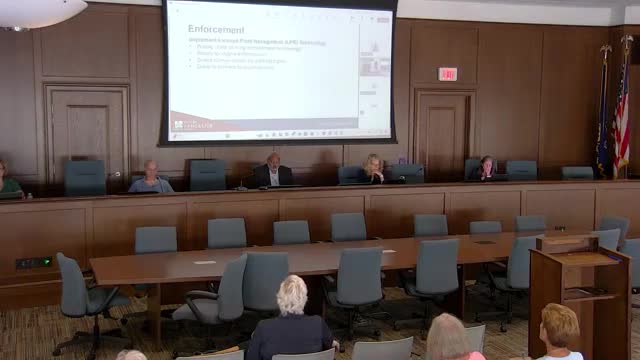License plate technology set to revolutionize parking enforcement
September 10, 2024 | Lancaster City, Lancaster County, Pennsylvania
This article was created by AI summarizing key points discussed. AI makes mistakes, so for full details and context, please refer to the video of the full meeting. Please report any errors so we can fix them. Report an error »

In a recent government meeting, officials discussed the implementation of license plate recognition technology as part of Phase 1 recommendations for parking enforcement, set to begin this year and fully operational by 2025. This technology, commonly used on toll roads, will be mounted on parking enforcement vehicles and integrated into the existing permit system. It allows real-time monitoring of parked vehicles to determine if they possess the necessary permits, enhancing enforcement efficiency and collecting valuable parking occupancy data.
The data collected will provide insights into parking patterns, helping to distinguish between resident demand and outside demand for parking spaces. This information is expected to inform future phases of the parking management strategy.
During the meeting, public attendees raised questions about the scope of the technology's use, particularly regarding its application on streets without permit parking. Concerns were voiced about the necessity of collecting data from these areas, with some residents questioning the rationale behind monitoring vehicles that do not require permits. Others highlighted that the data could help identify residents who are unable to park on their designated streets due to overflow from non-permitted vehicles.
The discussion also touched on the implications for residents who may park temporarily in metered spaces, raising questions about how the technology would handle such situations. Officials acknowledged the complexity of these issues and committed to further discussions with the Lancaster Parking Authority to clarify the technology's implementation and its potential impact on the community.
As the city moves forward with these plans, the integration of license plate recognition technology is poised to significantly reshape parking enforcement and management, aiming to create a more efficient system for residents and visitors alike.
The data collected will provide insights into parking patterns, helping to distinguish between resident demand and outside demand for parking spaces. This information is expected to inform future phases of the parking management strategy.
During the meeting, public attendees raised questions about the scope of the technology's use, particularly regarding its application on streets without permit parking. Concerns were voiced about the necessity of collecting data from these areas, with some residents questioning the rationale behind monitoring vehicles that do not require permits. Others highlighted that the data could help identify residents who are unable to park on their designated streets due to overflow from non-permitted vehicles.
The discussion also touched on the implications for residents who may park temporarily in metered spaces, raising questions about how the technology would handle such situations. Officials acknowledged the complexity of these issues and committed to further discussions with the Lancaster Parking Authority to clarify the technology's implementation and its potential impact on the community.
As the city moves forward with these plans, the integration of license plate recognition technology is poised to significantly reshape parking enforcement and management, aiming to create a more efficient system for residents and visitors alike.
View full meeting
This article is based on a recent meeting—watch the full video and explore the complete transcript for deeper insights into the discussion.
View full meeting